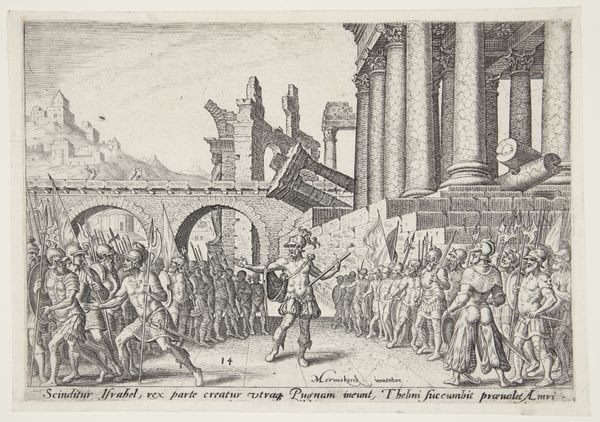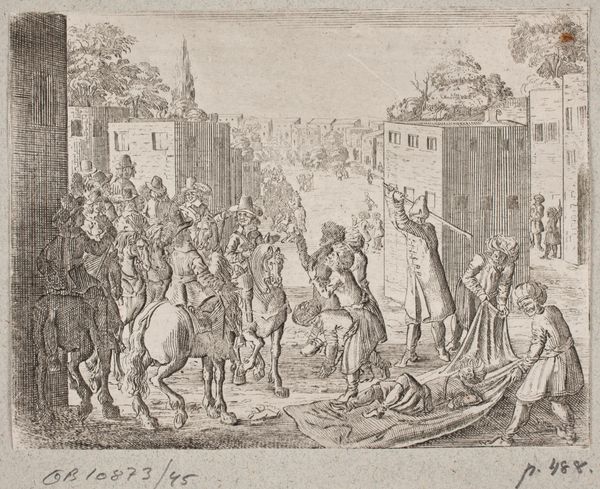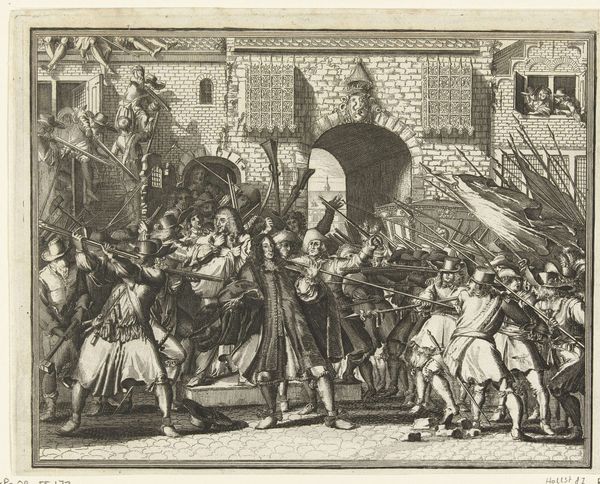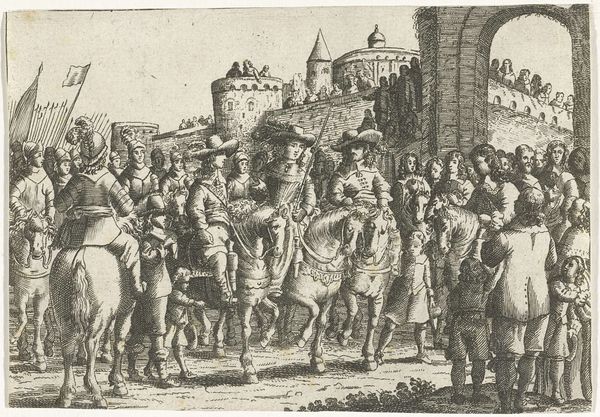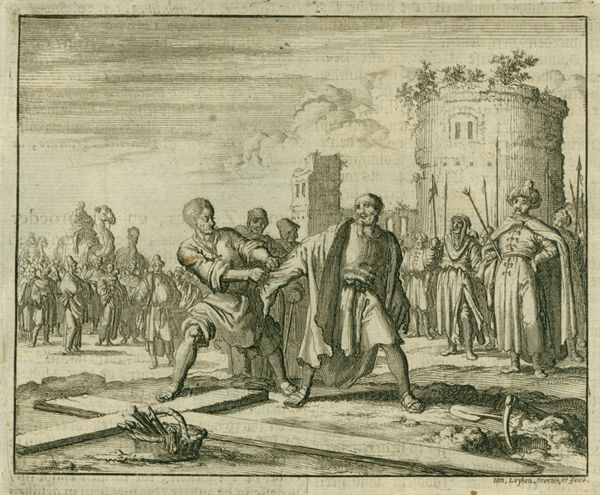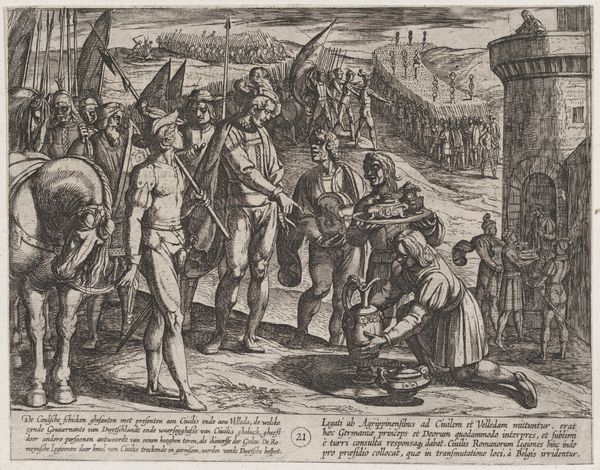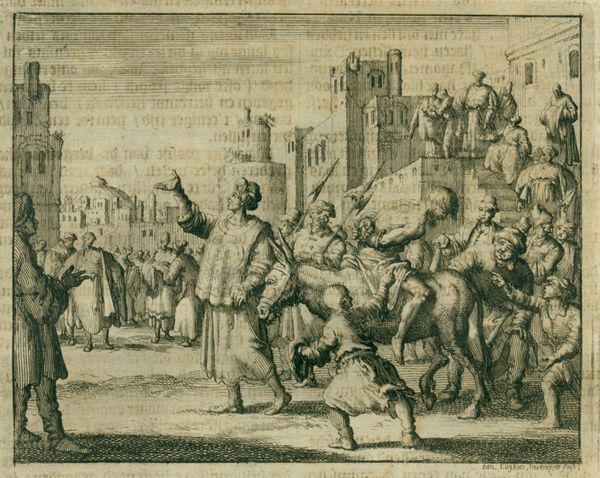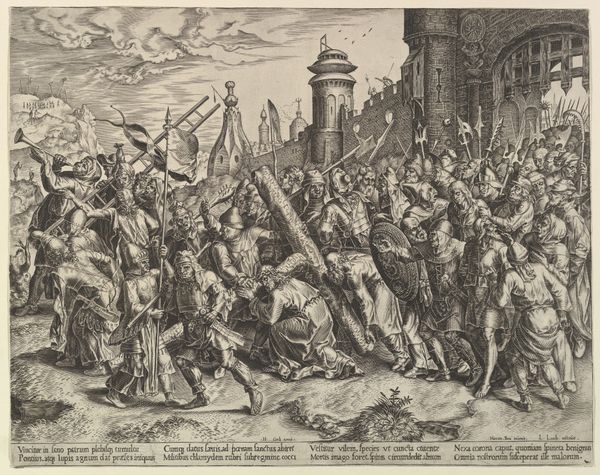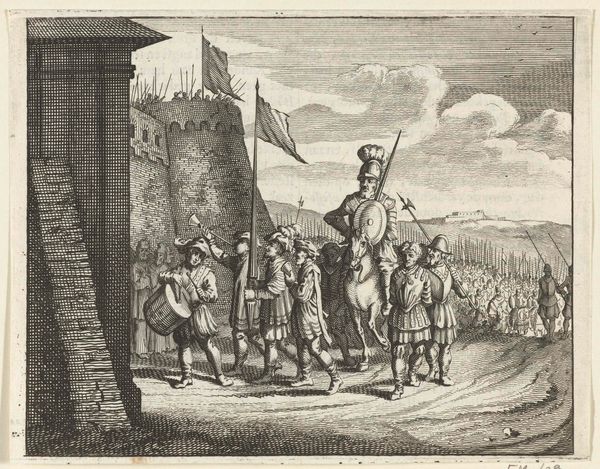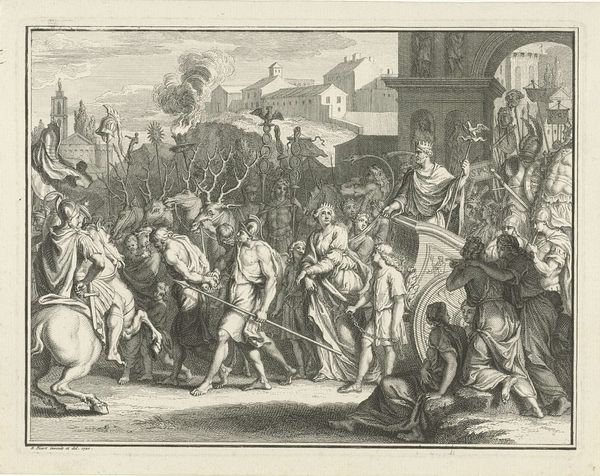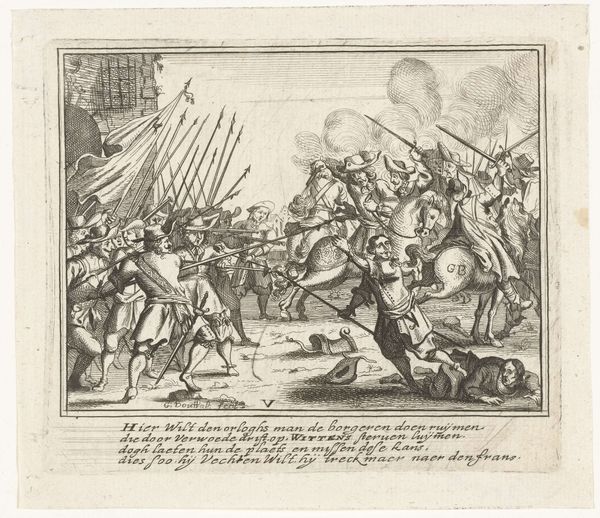
print, engraving
# print
#
landscape
#
perspective
#
figuration
#
line
#
history-painting
#
academic-art
#
engraving
Dimensions: height 141 mm, width 203 mm
Copyright: Rijks Museum: Open Domain
Editor: Here we have Philips Galle's engraving from 1569, "The People of Israel Divided Between Tibni and Omri." The detailed lines depicting a chaotic scene struck me first. What historical context illuminates this divided populace and dramatic ruin? Curator: It's fascinating to consider this engraving within its socio-political context. Galle, working in the Netherlands during a time of religious upheaval, often used biblical narratives to comment on contemporary struggles. Do you see how the classical ruins create a specific sense of legitimacy and gravity? Editor: Absolutely, the Roman-esque ruins mixed with the biblical subject matter gives a historical importance to the scene. Were the divisions represented here relevant to 16th-century society? Curator: Precisely! The division of Israel likely mirrored the fractures within Dutch society – Protestant versus Catholic, for instance. The 'history painting' element places a contemporary problem within a canon of familiar struggles. Look closely – how are the figures arranged to emphasize the split, and who seems to be claiming the space near the fallen classical ruins? This can give us insight to what power structures were in play. Editor: I see a figure almost claiming those ruins! He is larger in scale than the other figures in the background of the composition. It seems there is commentary on those vying for that space within the artwork. It almost mirrors a political campaign through composition! Curator: Exactly. By studying the distribution of bodies within Galle’s rendering, it makes the viewer wonder how history can be reinterpreted in alignment with the artist's specific social and political agendas, and how such prints helped disseminate biased perceptions widely to a receptive public. Editor: This perspective completely reshapes how I see the print; not just an artistic piece, but a potent political statement! Curator: It highlights the complex interplay between artistic creation and the manipulation of historical narratives, and how those can continue to be relevant today.
Comments
No comments
Be the first to comment and join the conversation on the ultimate creative platform.
